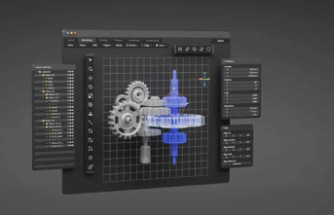If you have heard of rooftop farms, container farms, and automated indoor farms, then you might be familiar with how some forward-thinkers are combining automation and robotics with next-generation food production techniques to help feed the world in the twenty-first century.
Now, a multidisciplinary group of biologists, mechanical engineers, computer scientists and architects from Poland, Denmark, Germany, and Austria are exploring how some of these same ideas might translate into our built environment -- one that may someday be created out of an alliance between robots and plants. Flora Robotica is a project that aims to create plant-robot "biohybrids" and scaling it up to establish a “society of bio-hybrids that function in a self-organizing, distributed cognitive system capable of growth and development through interaction with humans, resulting in the creation of architectural structures.” We'll let them explain further:
© Flora Robotica
© Flora Robotica
© Flora Robotica
© Flora Robotica
The idea sounds a bit like something along the lines of responsive, genetic architecture, perhaps creating some kind of inhabitable, cybernetic gardens inside our homes. Heiko Hamann, a professor of computer science at the University of Paderborn, explains the aim of the four-year project on Digital Trends:
The vision is to develop generic methods for such symbiotic robot-plant societies that allow us to grow many of these things that we currently construct using many resources. The same tools could also be used to do automatic vertical gardening and urban agriculture. We envision very green cities that grow according to our needs, that grow food, and make use of a close symbiosis between technology and nature.
© Flora Robotica
These decentralized, “distributed robot gardens” would have plants' natural capabilities augmented by programmable, robotic assemblies that would help support their natural growth processes. For example, a robot-plant bio-hybrid would be able to move or 'self-grow' parts of itself to a spot with better sunlight. Tiny actuators and sensors on the plants can be hooked up in a wireless network and controlled via a smart device, and powered by the sun or wind via micro wind turbines.
The system is modular and can be scaled up as needed, or can be adapted using different support structures, such as a framework or a system of braids. Robotic components can be programmed to take in data and adjust the system accordingly, which helps the overall auto-regulation of a "self-growing, self-repairing" system as it "incorporates feedbacks from the plant to achieve long-term learning and adaptation."
© Flora Robotica
© Flora Robotica
So imagine your home full of vibrant, living, green structures that have been grown for your particular living situation, which you can interact with and control. On a larger scale, much of your neighbourhood and city utilizes a similar system, for architecture and for food. The concept could even be applied to the colonization of Mars, as we team plants up with robots for terraforming and food production.
It's a tantalizing idea that could shift the building industry's focus on materials over to processes of biological growth and how systems are designed. It would also change how humans would interact with their built and domestic environments, as furniture, homes and even whole cities are literally grown, cultivated and networked, rather than built. More over at Flora Robotica.
Our editors found this article on this site using Google and regenerated it for our readers.













